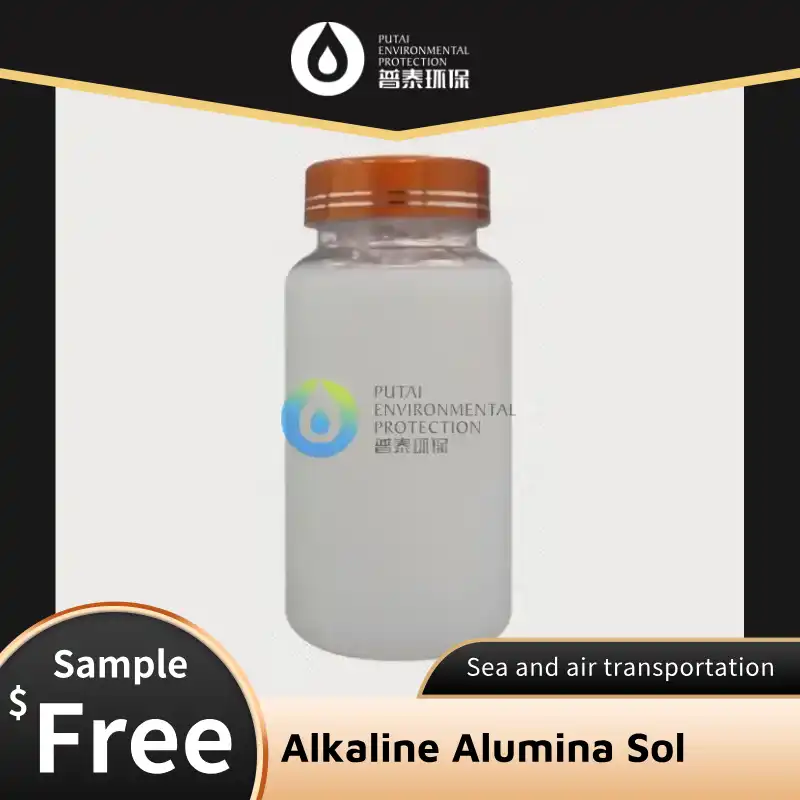Surface Modification Using Alkaline Alumina Sol Coating Materials
In the ever-evolving world of material science, surface modification techniques have become increasingly crucial. Among these, alkaline alumina sol coating materials have emerged as a game-changer, offering unparalleled benefits in various applications. This blog post delves into the fascinating realm of surface modification using alkaline alumina sol, exploring its significance, properties, and innovative applications.
The Need for Advanced Surface Modifications
Surface modification is a critical process in enhancing the properties and performance of materials across numerous industries. From improving corrosion resistance to altering wettability, the ability to manipulate surface characteristics opens up a world of possibilities. Traditional methods, while effective, often fall short in meeting the demanding requirements of modern applications.
Enter alkaline alumina sol coating materials. These innovative solutions have revolutionized surface modification techniques, offering unprecedented control over surface properties. The unique characteristics of alkaline alumina sol, including its high stability, excellent adhesion, and versatility, make it an ideal choice for a wide range of applications.
One of the key advantages of alkaline alumina sol coatings is their ability to form uniform, dense layers on various substrates. This uniformity ensures consistent performance and enhances the overall durability of the modified surface. Moreover, the alkaline nature of these sols contributes to their exceptional stability, allowing for extended shelf life and ease of application.
Alkaline Alumina Sol: Tailoring Surface Properties
The beauty of alkaline alumina sol lies in its adaptability. By carefully controlling the synthesis process and adjusting parameters such as pH, concentration, and particle size, it's possible to tailor the properties of the resulting coating to meet specific requirements.
One of the most significant advantages of alkaline alumina sol coatings is their ability to impart excellent wear resistance. The hard, ceramic-like nature of the alumina particles creates a protective layer that can withstand harsh conditions and prolonged use. This property makes alkaline alumina sol coatings particularly valuable in applications where durability is paramount, such as in the automotive and aerospace industries.
Another noteworthy characteristic of alkaline alumina sol coatings is their ability to modify surface energy. By altering the wettability of a surface, these coatings can enhance or inhibit adhesion, depending on the desired outcome. This property finds applications in diverse fields, from anti-fouling coatings for marine vessels to self-cleaning surfaces in architectural applications.
The thermal stability of alkaline alumina sol coatings is yet another feather in their cap. These coatings can maintain their integrity and performance even at elevated temperatures, making them suitable for high-temperature applications in industries such as metallurgy and ceramics.
Furthermore, the optical properties of alkaline alumina sol coatings are gaining increasing attention. The ability to create transparent, high-refractive-index coatings opens up possibilities in optics and photonics, including anti-reflective coatings for solar panels and optical lenses.
Innovative Applications in Material Science
The versatility of alkaline alumina sol coating materials has led to their adoption in a wide range of innovative applications across various industries. Let's explore some of the most exciting and impactful uses of this technology:
- Corrosion Protection: In the realm of corrosion protection, alkaline alumina sol coatings have proven to be highly effective. By forming a dense, impermeable layer on metal surfaces, these coatings provide an excellent barrier against corrosive agents. This application is particularly valuable in marine environments, where the harsh combination of saltwater and humidity poses significant challenges to metal structures.
- Catalysis: The high surface area and stability of alkaline alumina sol coatings make them excellent supports for catalysts. In the field of heterogeneous catalysis, these coatings can significantly enhance the efficiency and longevity of catalytic systems. From petrochemical processing to environmental remediation, the impact of alkaline alumina sol coatings in catalysis is far-reaching.
- Biomedical Implants: The biocompatibility of alumina, combined with the controllable surface properties of alkaline alumina sol coatings, has led to exciting developments in the field of biomedical implants. These coatings can enhance the integration of implants with surrounding tissue, reduce the risk of infection, and improve overall implant performance.
- Textile Industry: In the textile sector, alkaline alumina sol coatings are being used to impart flame-retardant properties to fabrics. The thin, uniform layer of alumina provides effective fire protection without compromising the fabric's flexibility or breathability. This application has significant implications for safety apparel and furnishings.
- Energy Storage: The world of energy storage is also benefiting from alkaline alumina sol coatings. These coatings can enhance the performance and longevity of battery components, particularly in lithium-ion batteries. By improving the stability of electrode materials and reducing unwanted side reactions, alkaline alumina sol coatings contribute to the development of more efficient and durable energy storage solutions.
- Aerospace Applications: In the aerospace industry, where materials are subjected to extreme conditions, alkaline alumina sol coatings are proving their worth. From thermal barrier coatings for jet engine components to protective layers for spacecraft materials, these coatings are helping to push the boundaries of what's possible in aerospace engineering.
- Water Treatment: The ability of alkaline alumina sol coatings to modify surface properties is being harnessed in water treatment applications. By coating filtration membranes with these materials, it's possible to enhance their performance, reduce fouling, and extend their operational life. This application has significant implications for improving access to clean water globally.
- Photovoltaics: In the rapidly growing field of solar energy, alkaline alumina sol coatings are making their mark. These coatings can be used to create anti-reflective layers on solar panels, increasing their efficiency by reducing light reflection. The durability and optical properties of these coatings make them ideal for this application, contributing to the advancement of renewable energy technologies.
- Food Packaging: The food industry is exploring the use of alkaline alumina sol coatings to develop improved packaging materials. These coatings can enhance the barrier properties of packaging, protecting food from moisture, oxygen, and other contaminants. This application has the potential to extend shelf life and reduce food waste, addressing important global challenges.
- Electronic Devices: In the world of electronics, alkaline alumina sol coatings are being used to protect sensitive components from environmental factors. These coatings can provide excellent insulation, moisture resistance, and thermal management, contributing to the development of more reliable and durable electronic devices.
As we continue to push the boundaries of material science, the role of alkaline alumina sol coating materials is only set to grow. Their unique combination of properties - stability, versatility, and performance - positions them at the forefront of surface modification technologies.
The applications discussed here represent just a fraction of the potential of alkaline alumina sol coatings. As research in this field progresses, we can expect to see even more innovative uses emerge, spanning an even broader range of industries and applications.
Conclusion
The future of surface modification is bright, and alkaline alumina sol coating materials are leading the charge. From enhancing the performance of everyday objects to enabling cutting-edge technologies, these materials are truly shaping the world around us, one surface at a time.
As we conclude this exploration of alkaline alumina sol coating materials, it's clear that their impact on material science and surface modification is profound and far-reaching. The ability to tailor surface properties with such precision and versatility opens up a world of possibilities, driving innovation across industries and contributing to solutions for some of our most pressing global challenges.
Are you looking to enhance your products or processes through advanced surface modification techniques? Xi'an PUTAI Environmental Protection Co., Ltd. is at the forefront of this technology, with over 26 years of experience in the production, sales, and R&D of specialized chemicals for water treatment and environmental protection. As a major producer and integrated service supplier of coagulants and other chemicals in north-west China, we're uniquely positioned to help you leverage the power of alkaline alumina sol coating materials for your specific needs. Don't let your competitors get ahead - contact us today at sales@ywputai.com to discuss how our expertise can drive your innovation forward.
References
1. Zhang, L., & Wang, H. (2020). Recent advances in alkaline alumina sol-gel coatings for surface modification. Journal of Materials Chemistry A, 8(15), 7028-7054.
2. Chen, X., Li, Y., & Liu, Z. (2019). Alkaline alumina sol coatings: Synthesis, properties, and applications. Progress in Materials Science, 100, 64-103.
3. Kumar, A., & Sharma, S. (2021). Surface modification using alkaline alumina sol: A comprehensive review. Applied Surface Science, 541, 148364.
4. Wang, Y., & Liu, J. (2018). Innovative applications of alkaline alumina sol coatings in material science. Advanced Materials Interfaces, 5(24), 1800934.


